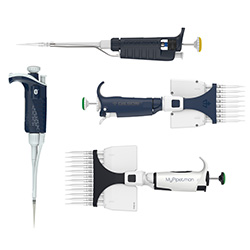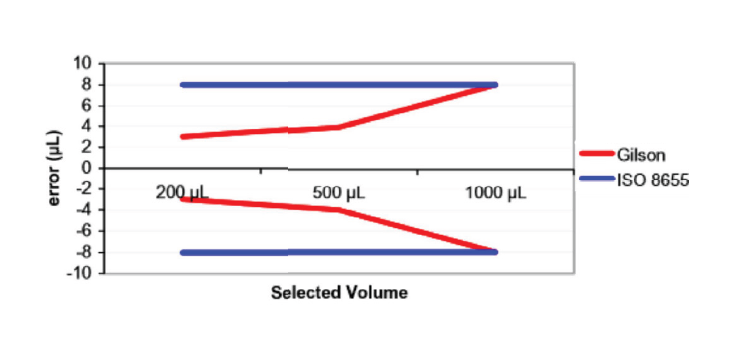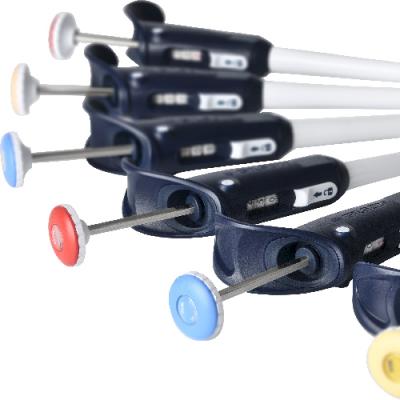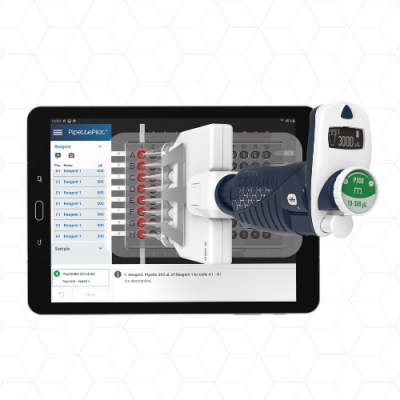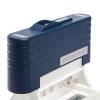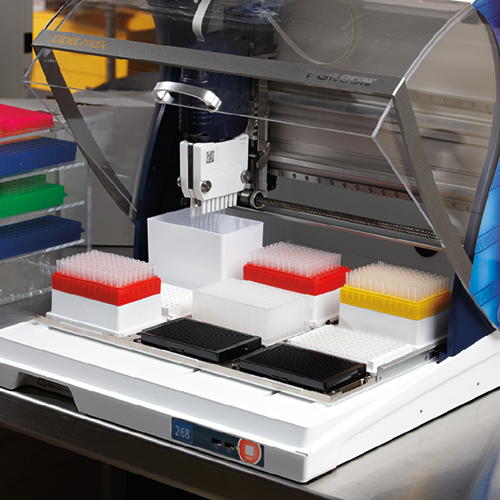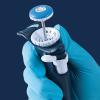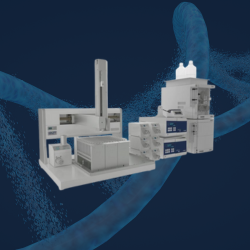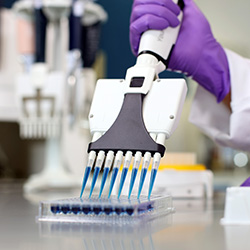How do you know you’re pipetting the volume you intend? Would you trust the results you’re getting if you didn’t know your pipettes were calibrated properly? Fortunately, there are standards that pipette manufacturers and calibration services follow so that you know you’re pipetting the correct volumes. In Gilson’s case, we choose to exceed these standards.
What is ISO 8655, and Why is it Needed?
The International Organization for Standardization (ISO) creates and publishes collections of best practices based on 168 national standards bodies across the world. The ISO 8655 covers the standards for calibrating and testing pipettes and other piston-operated volumetric devices. Information in the ISO 8655 includes standards for maximum permitted errors, guidelines for how to test and calibrate pipettes, reporting requirements to the end user, and how the end user can maintain their pipettes.
Parts of the Updated ISO 8655 Guidelines
While the previous ISO 8655 guidelines had seven parts, the updated version has nine. This version includes one section on terminology, general requirements, and user recommendations, five sections on types of liquid transfer devices (pipettes, burettes, dilutors, dispensers, and manually operated precision laboratory syringes), and three parts on testing methods (gravimetric, photometric, and alternative methods).
What’s New in the ISO 8655 Guidelines?
Before the update in April 2022, the previous ISO 8655 guidelines were from 2002. This most recent update addresses many areas to make pipette calibration more precise, including:
- Improving measurement procedures
- Using more accurate balances
- Controlling environmental conditions during calibration
- More information on calculation formulas
- Uncertainty estimation information in several documents
Below, we summarize the main updates in the ISO 8655 guidelines related to pipettes.
- Pipettes and tips are treated as one system (ISO 8655-2)
In the updated ISO 8655-2, the pipette and the pipette tip(s) are considered for calibration together as “one system.” This means a pipette can only be considered calibrated with the tip type used during the calibration. If you use a different tip type with the pipette, it won’t be considered calibrated and a new tip type requires a new calibration.
This information also needs to be conveyed to the end user where pipette manufacturers provide a list of tips that can be used with the pipette, and tip manufacturers provide a list of pipettes that can be used with the tips.
Each calibration must also test more than one tip of the same type with the same pipette to account for variation between individual tips. Tips are also treated as single-use consumables.
- Maximum permissible errors now exist for different % of nominal volumes (ISO 8655-2)
In the previous version of ISO 8655-2, the error limit was stated for only the nominal volume of the pipette. Now, ISO 8655-2 includes limits at 10%, 50%, and 100% of the nominal volume. This version also adds a new table for error limits for multichannel pipettes. Formerly, this error was twice the limit of single channel pipettes.
- Procedures for calibration include gravimetric and photometric procedures and new balance requirements (ISO 8655-6 and ISO 8655-8)
The gravimetric protocol, which is based on the weight of pipetted water, was considered the gold standard for calibrating and testing. The updated ISO 8655 now includes the option for calibration and testing based on the photometric procedure, which uses a high-resolution photometer and dyes to determine the volume pipetted.
Calibration now also includes stricter balance requirements. A six-place balance is now required for pipettes with nominal volumes less than 20 μL, and a five-place balance is needed for pipettes with a nominal volume between 20 μLand 199 μL.
- Environmental requirements for testing and calibration (ISO 8655-7)
The environment during calibration and testing can affect the outcome of the calibration. Conditions such as room temperature, water temperature, and humidity can all impact the calibration. However, creating an environment that falls within the stated norms can be difficult at a customer site. The updated ISO 8655-7 includes limits for deviation and alternative gravimetric measurements.
- New guidelines for multichannel pipettes
The updated ISO 8655 also contains updates specific to multichannel pipette tips:
- There are new guidelines for the maximum tolerance for tip bending during calibration. This is particularly important for pipettes with a nominal volume of less than 100 μL.
- The new guidelines also allow multichannel analytical balances to be used to calibrate 20 μL multichannel pipettes. All channels must be measured in parallel with each channel analyzed individually.
Gilson’s Specifications for Pipette Calibration are Stricter than ISO 8655 Guidelines
Gilson’s requirements are more stringent than the maximum tolerated errors defined by ISO 8655-2 as we feel this is important for those using pipettes for research, diagnostics, and QC. Below are two examples of Gilson’s stringent requirements for pipette calibration compared to ISO 8655-2:
- While in some cases, ISO 8655-2 uses the same tolerated error at all volumes of a pipette, Gilson uses different maximum tolerated errors for different volumes on the same pipette and includes stricter requirements for the maximum tolerance. Gilson’s pipettes must be calibrated according to Gilson’s specifications. For example, we require the PIPETMAN®P1000 to have a systematic error of 3 μL at its minimum volume (100 μL) and 8 μLat its maximum volume (1000 μL) (Figure 1). ISO8655 requires a systematic error of 8 μLat all volumes. See the Gilson-specific guidelines for all our pipettes in the Gilson Pipette Specifications Chart.
Figure 1. Comparison of Gilson’s maximum tolerated error vs. ISO 8655 maximum tolerated error at different volumes of the PIPETMAN P1000.
- Gilson also includes maximum tolerated errors for the minimum volume of the pipette, while ISO 8655 offers guidelines only at 10%, 50%, and 100% of the maximum volume. While 10% maximum volume often covers the entire volume range of the pipette (ex: 20 μL, 100 μL, and 200 μLon a P200), this is not always the case. For example, the volume range of a P10 is 0.5 μLto 10 μL(Table 1). The ISO 8655 only provides the maximum tolerated error at 1 μL, 5 μL, and 10 μL, while Gilson’s requirement also provides a maximum tolerated error at 0.5 μL.
| Volume (μL) |
Gilson |
ISO 8655 |
| 1.0 |
±0.025 |
±0.120 |
| 5.0 |
±0.060 |
±0.120 |
| 10.0 |
±0.080 |
±0.120 |
Table 1. Maximum permitted error for the PIPETMAN M P10M using Gilson and ISO 8655 specification.
Need to Calibrate Your Pipettes?
If it’s been a while since you last calibrated your pipettes, we can help you! With our calibration services, you can be confident that your pipettes are accurate and performing at their best.

















